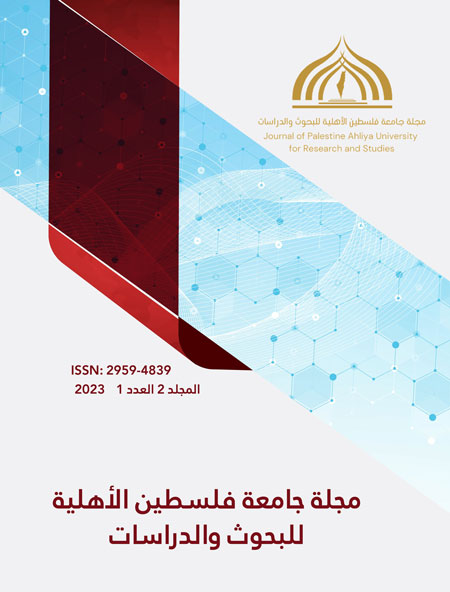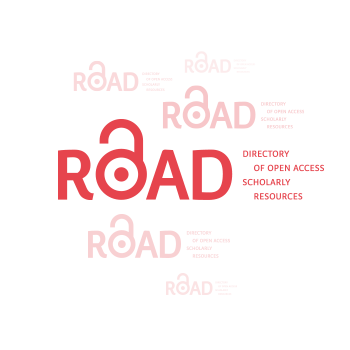تقييم الاكتئاب وقلق الموت لدى المراهقين وأزواج النساء الفلسطينيات المصابات بالسرطان
DOI:
https://doi.org/10.59994/pau.2023.1.134الكلمات المفتاحية:
الاكتئاب، قلق الموت، المراهقين، النساء المصابات بالسرطان، فلسطينالملخص
هدفت هذه الدراسة إلى تقييم انتشار قلق الموت والاكتئاب بين الأطفال المراهقين وأزواج النساء المصابات بالسرطان في فلسطين. شملت الدراسة )285( مشاركًا، بما في ذلك )200( مراهقًا في الفترة العمرية بين (12) و(20) عامًا، و(85) زوجًا لنساء مصابات بالسرطان تم علاجهنّ في مركزين رئيسين للسرطان في فلسطين. أجاب المشاركون على استبيان لتقييم قلق الموت باستخدام مقياس تمبلر لقلق الموت (DAS) والاكتئاب باستخدام مؤشر الاكتئاب بيك (BDI). أظهرت النتائج انتشار الاكتئاب وقلق الموت بين أفراد أسر النساء المصابات بالسرطان، مع وجود متوسط مقياس الاكتئاب أعلى بشكلٍ كبيرٍ لدى المراهقين من الأزواج. وقد لُوحظ أسوأ درجات للاكتئاب وأعلى متوسط قياس للقلق لدى البنات. في المحصلة، (20٪) من العينة كانت درجاتهم تشير إلى وجود الاكتئاب السريري لديهم. كشف تحليل القلق أن (39.9٪) من جميع المشاركين لديهم مخاوف أو قلق عالٍ من الموت، وكانت البنات لديهنّ أعلى نسبة. توصلت الدراسة إلى أن التكيف والعمل عاملان متنبئان مهمان للاكتئاب بين أبناء النساء المصابات بالسرطان، في حين كان التكيف وتعليم الأمهات والإقامة والدخل الشهري للعائلة متنبئات قلق الموت بين الأبناء. وكان العمر والتكيف ونوع ومدة العلاج، ومزود الرعاية متنبئات مهمة للاكتئاب بين البنات، في حين كان العمر ومزود الرعاية والدخل الشهري ومرحلة سرطان الأم متنبئات قلق الموت لدى البنات. وكان التكيف أيضًا متنبئًا مهمًا للاكتئاب وقلق الموت بين الأزواج، بالإضافة إلى العمل. تسلط الدراسة الضوء على ضرورة بدء سياسات وبرامج الإرشاد الوطنية للعائلات التي لديها مرضى سرطان، وخاصة للبنات المراهقات فيها، وتقييم الاضطرابات النفسية، مثل: الاكتئاب والقلق من الموت لدى تلك الأسر.
التنزيلات
المراجع
Abdel-Khalek, A. (1998). Death, Anxiety, and Depression in Lebanese Undergraduates. OMEGA - Journal of Death and Dying, 37(4), 289–302. https://doi.org/10.2190/CN5K-XF4C-2NPG-17E0
Alacacioglu, A., Ulger, E., Varol, U., Yildiz, I., Salman, T., Bayoglu, V., Dirican, A., Demir, L., Akyol, M., Yildiz, Y., Kucukzeybek, Y., Ataman, G., Can, H., Alacacioglu, I., & Tarhan, M. O. (2014). Depression, anxiety and sexual satisfaction in breast cancer patients and their partners-Izmir oncology group study. Asian Pacific Journal of Cancer Prevention : APJCP, 15(24), 10631–10636. https://doi.org/10.7314/apjcp.2014.15.24.10631
Barnes, J., Kroll, L., Burke, O., Lee, J., Jones, A., & Stein, A. (2000). Qualitative interview study of communication between parents and children about maternal breast cancer. Bmj, 321(7259), 479-482.
Brown, R. T., Fuemmeler, B., Anderson, D., Jamieson, S., Simonian, S., Hall, R. K., & Brescia, F. (2007). Adjustment of children and their mothers with breast cancer. Journal of pediatric psychology, 32(3), 297-308.
Clemmens, D. (2009). The significance of motherhood for adolescents whose mothers have breast cancer. Oncology Nursing Forum, 36 (5), 571–577. http://dx.doi.org/10.1188/09. ONF.571-577
Dakin, S. (2016). The effect of parental cancer on children. New Zealand Medical Student Journal, (23).
Al-Zaben, F., Al-Amoudi, S. M., El-deek, B. S., & Koenig, H. G. (2014). Impact of maternal breast cancer on school-aged children in Saudi Arabia. BMC Research Notes, 7, 1-5.
Gazendam-Donofrio, S. M., Hoekstra, H. J., van der Graaf, W. T., van de Wiel, H. B., Visser, A., Huizinga, G. A., & Hoekstra-Weebers, J. E. (2011). Adolescents’ emotional reactions to parental cancer: effect on emotional and behavioral problems. Journal of pediatric psychology, 36(3), 346-359.
Given, B., Given, C., Sherwood, P. (2012). The challenge of quality cancer care for family caregivers. Seminars in Oncology Nursing, 28(4), 205-212. http://dx.doi.org/10.1016/j.soncn.2012.09.002
Grunfeld, E., Coyle, D., Whelan, T., Clinch, J., Reyno, L., Craig, C. (2004). Family caregiver burden: results of a longitudinal study of breast cancer patients and their principal caregivers. CMAJ, 170 (12), 1795-1801. DOI: https://doi.org/10.1503/cmaj.1031205
Harding, S. R., Flannelly, K. J., Weaver, A. J., & Costa, K. G. (2005). The influence of religion on death anxiety and death acceptance. Mental Health, Religion & Culture, 8(4), 253-261.
Gorji, M. A., Bouzar, Z., Haghshenas, M., Kasaeeyan, A. A., Sadeghi, M. R., & Ardebil, M. D. (2012). Quality of life and depression in caregivers of patients with breast cancer. BMC research notes, 5(1), 1-3.
Huizinga, G. A., Visser, A., Zelders-Steyn, Y. E., Teule, J. A., Reijneveld, S. A., & Roodbol, P. F. (2011). Psychological impact of having a parent with cancer. European Journal of Cancer, 47, S239-S246.
Katende, G., Nakimera, L. (2017). Prevalence and correlates of anxiety and depression among family carers of cancer patients in a cancer care and treatment facility in Uganda: A cross-sectional study. African Health Sciences, 17(3), 868-876. https://doi.org/10.4314/ahs.v17i3.30
Kühne, F., Krattenmacher, T., Bergelt, C., Ernst, J. C., Flechtner, H. H., Führer, D., ... & Möller, B. (2012). Parental palliative cancer: psychosocial adjustment and health-related quality of life in adolescents participating in a German family counselling service. BMC Palliative Care, 11(1), 1-9.
Miller, A. K., Lee, B. L., & Henderson, C. E. (2012). Death anxiety in persons with HIV/AIDS: A systematic review and meta-analysis. Death studies, 36(7), 640-663.
Ministry of health (MOH). (2022). Palestinian health information center (PHIC), annual health report 2021, Palestine.
Öngider, N., & Özışık Eyüboğlu, S. (2013). Investigation of death anxiety among depressive patients. Journal of Clinical Psychiatry, 16(1), 34-46.
Sharma, S., Alfatah, M., Bari, V. K., Rawal, Y., Paul, S., & Ganesan, K. (2014). Sphingolipid biosynthetic pathway genes FEN1 and SUR4 modulate amphotericin B resistance. Antimicrobial agents and chemotherapy, 58(4), 2409-2414.
Rainville, F., Dumont, S., Simard, S., & Savard, M. H. (2012). Psychological distress among adolescents living with a parent with advanced cancer. Journal of Psychosocial Oncology, 30(5), 519-534.
Rasmussen, C. H., & Johnson, M. E. (1994). Spirituality and religiosity: Relative relationships to death anxiety. OMEGA-Journal of Death and Dying, 29(4), 313-318.
Saggino, A., & Ronco, A. (1997). Depression, state anxiety, trait anxiety and social desirability as predictive variables for death anxiety. Giornale Italiano di Psicologia, 24, 629–638.
Semple, C. J., & McCance, T. (2010). Parents' experience of cancer who have young children a literature review. Cancer Nursing, 33(2), 110-118. doi:10.1097/NCC.0b013e3181c024bb
Shehadah, F., & Ahmead, M. (2016). Death anxiety and coping mechanism among women with breast cancer attending Beit-Jala Governmental hospitals in Bethlehem. Master thesis, AL-Quds University, Palestine.
Soleimani, M., Lehto, R., Negarandeh, R., Bahrami, N., Chan, Y. (2016). Death Anxiety and Quality of Life in Iranian Caregivers of Patients with Cancer. Cancer Nursing, 40(1):E1-E10.
Visser, A., Huizinga, G. A., van der Graaf, W. T., Hoekstra, H. J., & Hoekstra-Weebers, J. E. (2004). The impact of parental cancer on children and the family: a review of the literature. Cancer treatment reviews, 30(8), 683-694.
Visser, A. (2007). Children's functioning following parental cancer (p. 192).
Visser, A. (2007). Children's functioning following parental cancer. Thesis fully internal (DIV), University of Groningen, Netherlands.
Wang, Y. P., & Gorenstein, C. (2013). Psychometric properties of the Beck Depression Inventory-II: a comprehensive review. Brazilian Journal of Psychiatry, 35, 416-431.

التنزيلات
منشور
كيفية الاقتباس
إصدار
القسم
الرخصة
الحقوق الفكرية (c) 2023 مجلة جامعة فلسطين الأهلية للبحوث والدراسات

هذا العمل مرخص بموجب Creative Commons Attribution 4.0 International License.
مجلة جامعة فلسطين الاهلية للبحوث والدراسات تعتمد رخصة نَسب المُصنَّف 4.0 دولي (CC BY 4.0)











